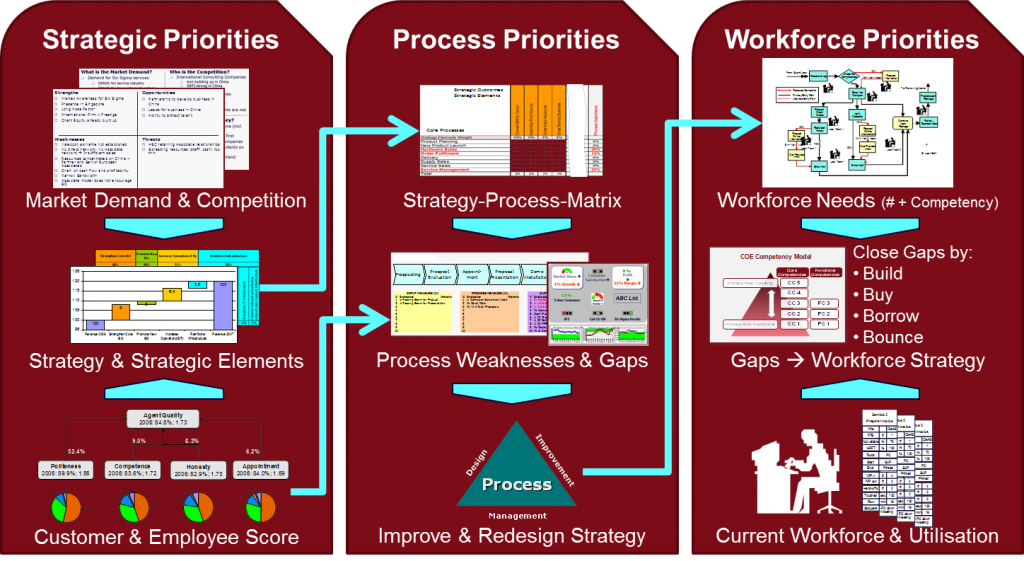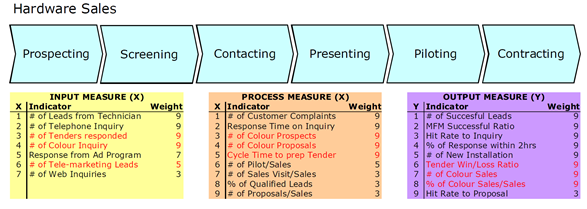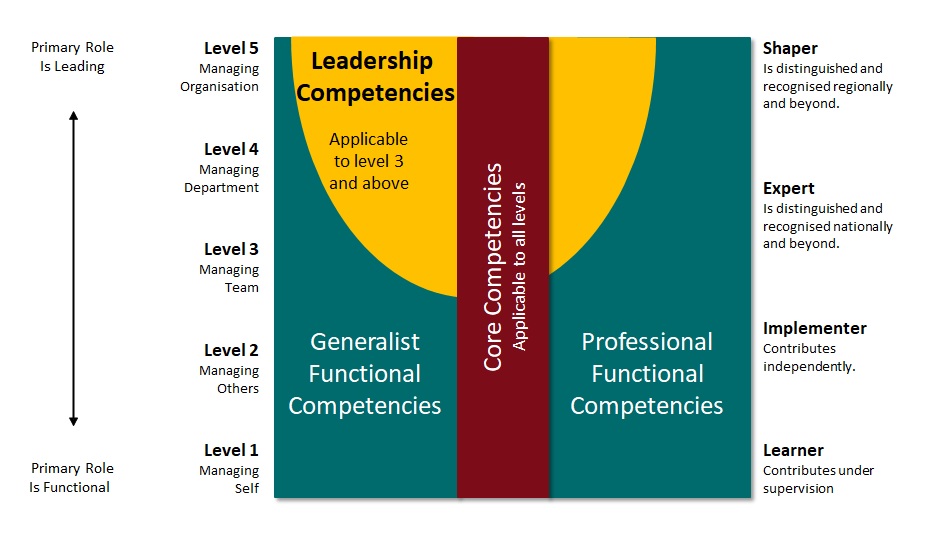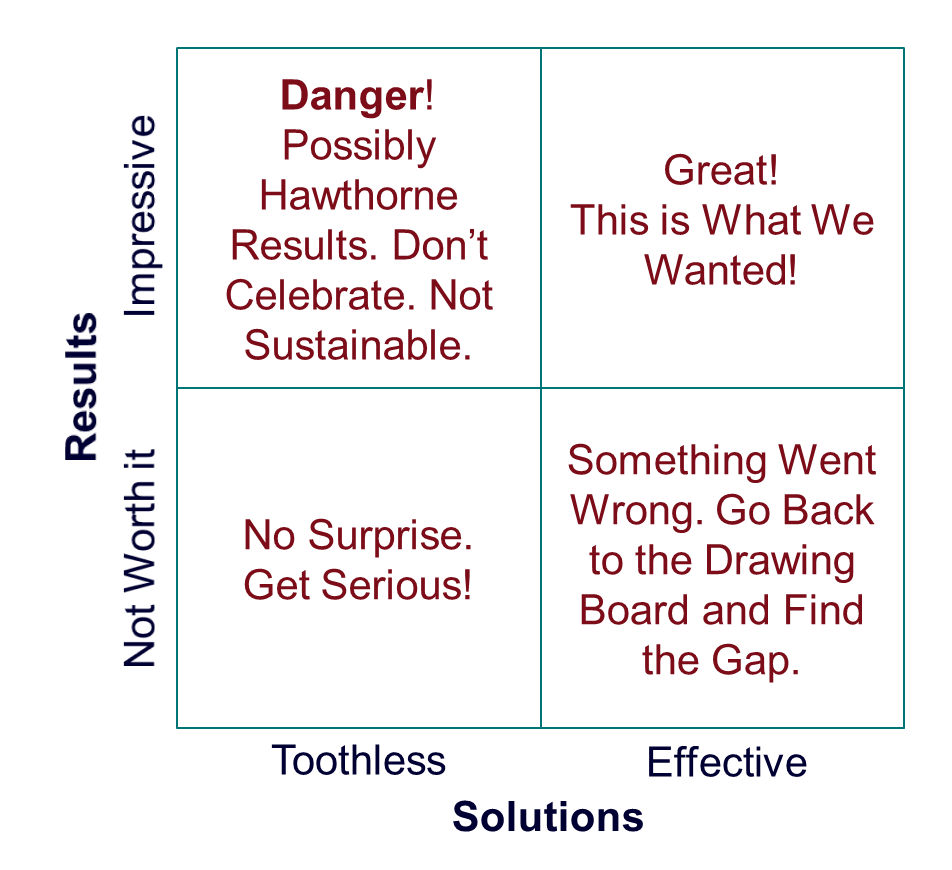
- +65 61000 263
- Contact@COE-Partners.com
- Newsletter
Business Process Reengineering (BPR) is the fundamental rethinking and radical redesign of business processes to achieve dramatic improvements in critical contemporary modern measures of performance, such as cost, quality, service, and speed. Michael Hammer, 1993
Business Process Reengineering (BPR) helps organisations in any public or private environment to analyse their processes and rethink how the work gets done.
Firstly, Business Process Reengineering begins with a review of the strategic priorities of the organisation. When doing so, one needs to take into consideration the external and internal operating environment, i.e. business or market-level and corporate-level strategies.
Secondly, driven by the strategic priorities, process priorities are defined. These process priorities help focus on the for accomplishing the strategic objectives most important processes. BPR needs to start with these processes in order to best use the given resources.
Finally, strategic priorities and process priorities determine workforce priorities. These workforce priorities include resourcing strategies, development and career planning interventions as well as performance management and incentive structure. Additionally, necessary competencies and human resource strength are results of defining workforce strategies.

Since BPR and LSS have many similarities, it is worth mentioning where they are comparable and where they are different (read here).
| Characteristic | BPR | LSS |
| Objective | Radical redesign of organisational processes and structure | Improvement and redesign of certain processes |
| Scope | Large, e.g., organisation or division | Small, e.g., problem areas, own processes, projects |
| Risk | High to medium | Low to medium |
| Goals |
|
|
| Project Approach | Varies | DMAIC |
| Tools Used | Process mapping, mainly value stream mapping | Process mapping, e.g., value stream mapping and others. Statistical analysis. |
| Method | Challenge process fundamentals | Focus on CTQ |
| Project Leader | Usually, external BPR experts | Usually, internal experts like LSS Green or Black Belts |
| Knowledge transfer | Usually not required | Key feature |
| Disadvantage | Resource intensive due to large scope | Organisation-wide streamlining might be overlooked due to small scope |
| Role of IT | Enabler | Enabler |
One distinct difference between BPR and LSS lies in the approach to manage projects. Whereas Lean Six Sigma uses the proven and rigid DMAIC (Define-Measure-Analyse-Improve-Control) roadmap to conduct improvement projects, the roadmap used for BPR varies depending on the external partner leading the BPR study.

The analysis of strategic priorities helps to identify priorities for process analysis. Tools include customer and employee surveys, focus group discussions, Jaccard analysis, Kano analysis and others.

After redesigning core and support business processes, the adaptation of IT support for performing the tasks is an option. Implementing IT support to speed up broken processes may result in improvements. But this intervention usually does not use the full potential of the approach.
Most importantly, a central theme of BPR is process mapping. There are many different ways for doing process mapping, and the tool of choice depends on the main objective.

Business Process reengineering usually causes major changes to an organisation and therefore needs change management. This change management requires the communication of a clear case for change. I.e. everyone who is part of the BPR project and everyone who will take part in the implementation of changes as well as those who will experience the changes need to clearly understand the need for the change. Better yet, they need to “feel the pain”, that makes the change necessary.
Every business intervention deserves a clear and measurable objective. Usually, the objective for Business Process Reengineering follows the case for change. If the case for change is measurable, the objective can be put in measurable terms, too. The objective should be aggressive. Conservative objectives can be achieved by small changes here and there. Aggressive objectives can not. Additionally, these small changes are reversible and hence, do not deliver impactful changes. Aggressive objectives require and yield rethinking the process environment fundamentally. This is what BPR is about.
Every business intervention deserves a clear and measurable objective. Usually, the objective for Business Process Reengineering follows the case for change. If the case for change is measurable, the objective can be put in measurable terms, too. The objective should be aggressive. Conservative objectives can be achieved by small changes here and there. Aggressive objectives can not. Additionally, these small changes are reversible and hence, do not deliver impactful changes. Aggressive objectives require and yield rethinking the process environment fundamentally. This is what BPR is about.
The core of Business Process Reengineering is about changes in the process. The To-Be process needs to be mapped and moulded in SOPs, instructions etc. The acceptance of process changes by process stakeholders depends on their involvement in the To-Be design exercise.
More often than not, process changes suggest or even require structural changes. Structure must follow the process, not vice versa. Hence, structure changes may come with changes in roles and responsibilities. These may require job-redesign in order to be able to support process changes.
These process changes and job-redesign tasks often lead to changes in competencies needed to run the new process. And, changes in the competency framework of the organisation may have an effect on the learning and development system and even career planning of personnel involved. Hence, working carefully in these areas may result in key incentives to support the process changes.
As a result, Business Process Reengineering is or at least requires OD interventions and a carefully crafted communication strategy and plan to implement them. Hence, a BPR communication plan is necessary.
A major undertaking like Business Process Reengineering needs milestones and early successes (quick wins) along these milestones. Implementing quick wins early and communicating them widely will generate buy in from key stakeholders and management. It is not a good practice to wait for month until the end of the BPR exercise before communicating results. Implementing and “selling” Quick Wins early is needed and possible. These Quick Wins serve as catalysts for success of the BPR project.




Copyright © 2025 by COE Pte Ltd. All Rights Reserved.